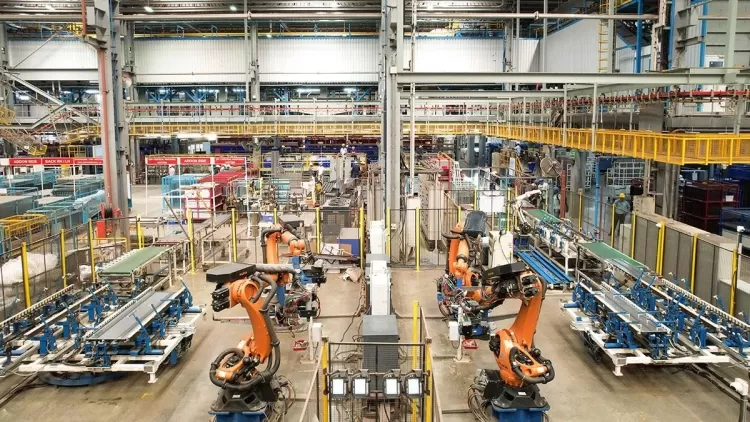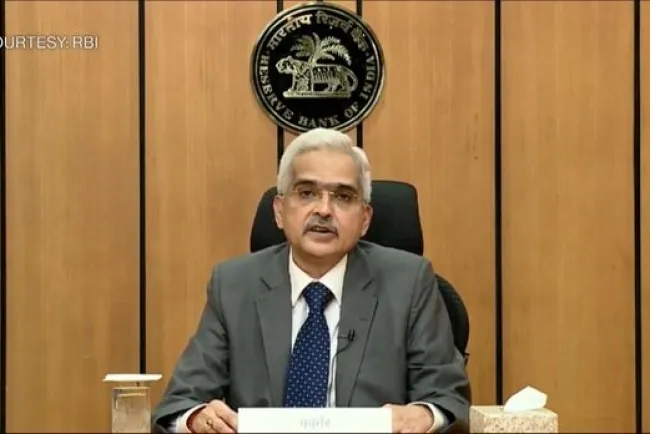India’s Manufacturing Future: Turbocharging Growth and Embracing Global Supply Chains
India’s ambition to become a global manufacturing powerhouse is gaining momentum. With the success of the Production Linked Incentive (PLI) schemes, the government is positioning India at the center of global supply chains, especially in sectors like semiconductors, electronics, and mobile manufacturing. The country’s growth prospects are promising, especially with the tailwinds from the US-China trade war and a rapidly expanding manufacturing sector.

India’s manufacturing sector is on the brink of a transformative shift, with the government’s ambitious goals to make India a global manufacturing hub. For years, India has aspired to increase the contribution of manufacturing to its GDP, aiming for 25% by 2030. With the right policy support and global market dynamics in its favor, India is now well-positioned to achieve this target. In particular, the country’s focus on key sectors such as electronics, semiconductors, and mobile manufacturing, bolstered by the Production Linked Incentive (PLI) schemes, is setting the stage for a remarkable growth trajectory.
The PLI Scheme: A Game-Changer for Indian Manufacturing
The PLI scheme, launched by the Indian government, has been a critical enabler for manufacturing in India. Spanning 14 vital sectors, including electronics, textiles, and pharmaceuticals, the scheme is designed to incentivize innovation, reduce dependence on imports, and boost domestic manufacturing. With an outlay of ₹1.97 lakh crore, the scheme has made significant strides in attracting investments and fostering growth.
The success of the PLI scheme has exceeded expectations in some sectors, particularly in electronics. India’s electronics sector, including smartphone manufacturing, has been a star performer. Apple, for instance, recorded over ₹1 lakh crore in iPhone exports from India in 2024, marking a 42% increase from the previous year. Domestic production of smartphones surged by nearly 46%. These numbers demonstrate India’s growing role as a global hub for electronics manufacturing.
However, not all sectors have seen the same success. Some companies have struggled to meet their PLI targets, which could prompt the government to adjust and tweak the scheme. Despite these challenges, the overall outlook remains positive, with projections suggesting the PLI scheme could generate over $450 billion in revenue in the next five to six years. This success has led many to anticipate that the government may increase its commitment to the PLI scheme, further fueling growth.
The Semiconductor Dream: India’s Gateway to Global Supply Chains
While electronics have seen significant success, India’s semiconductor sector holds the key to the next phase of the country’s manufacturing ambitions. Semiconductors are essential for nearly every modern technology, from smartphones to defense systems. Given the global chip shortage and the geopolitical importance of semiconductor manufacturing, India’s push to build a domestic semiconductor ecosystem is a crucial step toward securing a larger share of the global manufacturing pie.
The semiconductor industry ticks all the right boxes for India. It has the potential to create large-scale employment, leverage India’s growing tech talent, and align the country with global supply chains. The government’s $10 billion initiative to attract semiconductor manufacturers, coupled with policy support and the establishment of new semiconductor plants, will be instrumental in making India a key player in the global chip market. This will not only boost India’s tech capabilities but also reduce its dependence on imports from Taiwan, South Korea, and the U.S.
Geopolitical Tailwinds: US-China Trade War and India’s Strategic Advantage
Another factor that gives India an edge in the global manufacturing race is the ongoing US-China trade war. As global companies seek to diversify their supply chains and reduce dependence on China, India is emerging as an attractive alternative. With favorable labor costs, a large domestic market, and government incentives, India is well-positioned to benefit from these shifting supply chain dynamics.
Countries are increasingly looking to India as a key manufacturing partner, and the country’s growing participation in global supply chains is expected to accelerate. The semiconductor push, along with the success in electronics manufacturing, positions India to capitalize on this trend and become a global manufacturing hub. As more global companies shift production to India, the country will become increasingly integrated into the global supply chain, further strengthening its manufacturing capabilities.
The Road Ahead: Scaling Manufacturing and Achieving Growth Targets
India’s manufacturing sector grew at nearly 10% in the past year, and this growth trajectory shows no signs of slowing down. With continued policy support, strategic investments, and the momentum from the PLI schemes, India is well on its way to achieving its goal of having manufacturing contribute 25% of GDP by 2030. The country’s focus on sectors like electronics, semiconductors, and mobile manufacturing will be critical in meeting this target.
India’s manufacturing push will not only help the country become a significant player in global supply chains but will also create millions of jobs, fuel economic growth, and enhance technological capabilities. As the government fine-tunes the PLI schemes and addresses challenges in certain sectors, India is poised to become a global manufacturing powerhouse.
Conclusion: India’s Manufacturing Moment
India’s manufacturing sector is at a crucial inflection point, with the country on track to become a global leader in key industries like electronics and semiconductors. The government’s ambitious initiatives, coupled with global market shifts, position India as a rising star in the global manufacturing ecosystem. As the country continues to develop its manufacturing capabilities, it will not only achieve its GDP targets but will also play a vital role in shaping the future of global supply chains. The next decade will be pivotal for India’s manufacturing journey, and if current trends continue, the country is poised for remarkable growth.
What's Your Reaction?
















